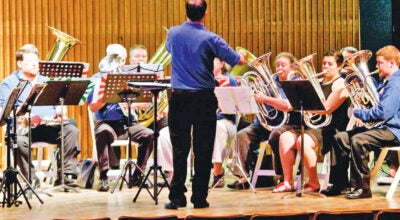The art of housebreaking your pet
Published 11:00 pm Saturday, October 3, 2009
Housebreaking is probably the most important problem that dog owners must overcome.
The basic principles of housebreaking are simple, but applying those principles to individual circumstances can be tricky.
There are four main components to housetraining a dog. They are positive reinforcement of alternate behaviors, management of the problem and setting the dog up to succeed, consequences for inappropriate elimination, and consistency in dealing with inappropriate elimination.
First, positive reinforcement of alternative behaviors. The alternate behavior that owners need to reinforce is, of course, eliminating the area that they have designated.
This could be a puppy housebreaking pad or the back yard. Every time your puppy eliminates in these areas he should be rewarded.
Next is management of the problem and setting the dog up to succeed. It is the puppy’s owner’s responsibility to constantly supervise him to make sure he only eliminates in the desired area. An untrained pup should never be given the ability to run all over the house. He should be on a leash and where the owner can see him at all times.
An unwatched dog is just being set up to fail and will never succeed unless this step is closely followed. Consequences for inappropriate elimination. Punishing a dog during housebreaking will be counterproductive.
This will only teach the young pup to hide from the owner when eliminating and even refuse to potty in the presence of the owner.
If an accident does occur, the owner should make a noise to startle the pup, but without frightening him, and quickly take him to the designated potty spot. When he finishes in the potty spot, praise and reward him.
Consistency in dealing with inappropriate elimination. The owner must be consistent when eliminating any behavior problem. Creating a daily routine will help create consistency.
Feeding your puppy at the same time everyday and always taking the puppy to the same place to potty are good examples of consistency in a good housebreaking routine.
When a pup has an accident, be sure to clean it up with an odor-neutralizing product so that the puppy is not tempted to return to the same area.
Soap and water will not be adequate. Always take the dog out immediately following things like waking up, eating, drinking, or playing. His urge to potty will be greater at these times.
Crate training will greatly aid in housebreaking. When the pup cannot not be supervised, place him in a correctly sized crate.
The crate must not be big enough where he can potty on one end and then sleep in the other. It is natural for a puppy not to soil his own bed. Crates not only aid in housebreaking but they provide your puppy a safe “den” of his own.
A crate becomes a safe place to put your puppy just like a crib or playpen provides safety for a child.
Housebreaking is a challenge, but is essential for your puppy to be an enjoyable member of the family.
Be consistent and rewarding and you and your pup WILL succeed. Remember, Every dog deserves to be treated like a show dog.
Kate Barker, The BARKer Shop




